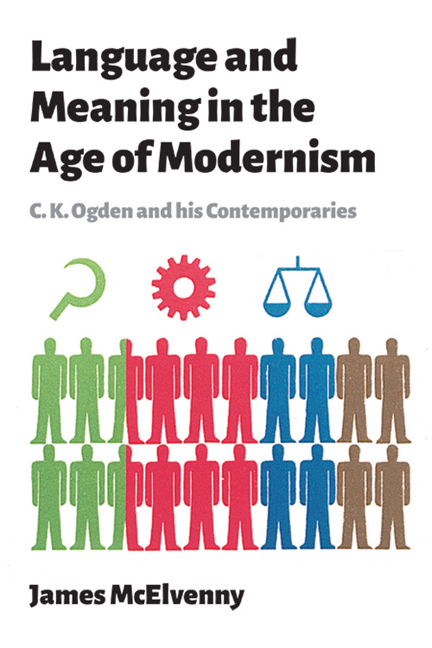4 - Ogden and the Vienna Circle
Published online by Cambridge University Press: 01 May 2021
Summary
By the beginning of the 1930s the centre of gravity of the new analytic approach to philosophy had moved from Cambridge to Vienna. Russell and Wittgenstein's various versions of logical atomism, mixed with indigenous strands of German philosophy, became the wissenschaftliche Weltauffassung, or ‘scientific world conception’, embodied in a set of doctrines known variously as ‘logical positivism’ or ‘logical empiricism’. Although not wholly uncritical of their innovations, Russell himself recognised the pre-eminence of the direction taken by the Viennese philosophers, commenting later that he was, ‘as regards method, more in sympathy with the logical positivists than with any other existing school’ (Russell 1940: 7). The Viennese proponents of these new doctrines did not consider themselves ‘pure philosophers’, but scientists striving to secure the epistemological foundations of science in order to do away with the accumulated confusions of philosophy. Their target was ‘metaphysics’ as practised by the German idealists, but in their mouths this word became a disparaging term for any philosophy that did not meet their standards of logical rigour. The aim was modern thought for the modern world, and an escape from the mysticism and mystification of the past.
Ogden came into personal contact with two of the most prominent members of the Vienna Circle, as the group is known, Otto Neurath (1882–1945) and Rudolf Carnap (1891–1970), in 1933, just after Basic English had appeared on the scene and was being vigorously promoted, and just after the members of the Circle had published some of their foundational papers and were gaining attention around the world. Ogden's intentions were, in the case of Neurath, directed towards collaboration and, in the case of Carnap, towards business. Ogden wanted to adapt Neurath's ‘Vienna method of picture statistics’ for the teaching of Basic, fulfilling a long-held hope for a visual educational adjunct to his project (Ogden 1929b: 29; cf. Chapter 3, §VI). From Carnap he wanted to secure the English translation rights to his recent philosophical papers, which were already being keenly discussed in the English-speaking world.
By the time they became aware of each other, both Ogden on the one side and Carnap and Neurath on the other had already formulated the key ideas that constituted their doctrines and were busy promoting them.
- Type
- Chapter
- Information
- Language and Meaning in the Age of ModernismC.K. Ogden and His Contemporaries, pp. 113 - 153Publisher: Edinburgh University PressPrint publication year: 2018



